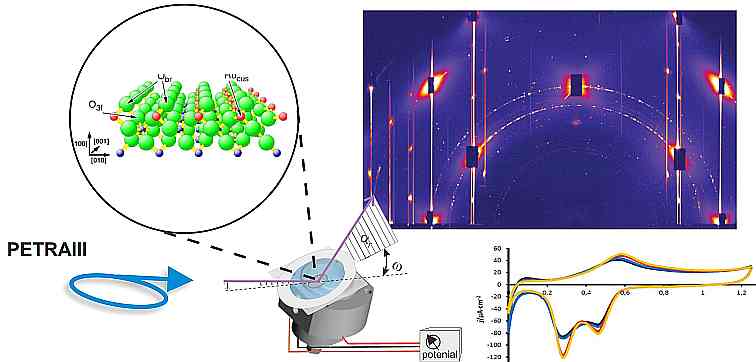BMBF: HEXCHEM
In-situ High Energy X-ray Diffraction from Electrochemical Interfaces (05K2016-HEXCHEM)
BMBF funded project within the German-Swedish cooperation: Röntgen-Angström Cluster (RAC)

Overall goal of the project
The central objective of this project is to correlate the atomic scale information on the stability of electrochemically active liquid/solid interfaces under potential control with their electrochemical performance for controlled oxygen and chlorine evolution reactions (OER and CER), the oxygen reduction reaction (ORR) and corrosion with a special focus on the stability of the active electrode. The fundamental understanding of these processes is of paramount importance for technological applications such as chlorine production, stability of electrode materials during hydrogen production from electrolysis and corrosion prevention. To address the structure of deeply buried solid /liquid interfaces we plan to utilize high energy X-ray diffraction (HEXRD) techniques with photon energies in the range from 70 keV to 120 keV, such as high energy surface X-ray diffraction (HESXRD), grazing- incident small-angle X-ray scattering (GISAXS) and X-ray reflectivity (XRR), allowing for interfacial crystallography and morphological characterization with unprecedented temporal resolution and depth penetration of the liquid medium.
In particular, we will use the high X-ray energies at the P07 and the Swedish beamline P21.2 at PETRAIII. In combination with the electrochemical knowledge of the proposers (Prof. Lundgren: University of Lund, Sweden, Prof. Over: JLU Gießen, Germany, Prof. Pan: KIT, Stockholm, Sweden, Density Functional Theory (DFT) (Prof. Grönbeck, University of Goteborg, Sweden), and the surface characterization and preparation facilities at the DESY NanoLab (collaborating group Prof. Stierle) will provide the opportunity to study important electrochemical processes in realistic, industrially relevant environments non-intrusively on the atomic scale.
